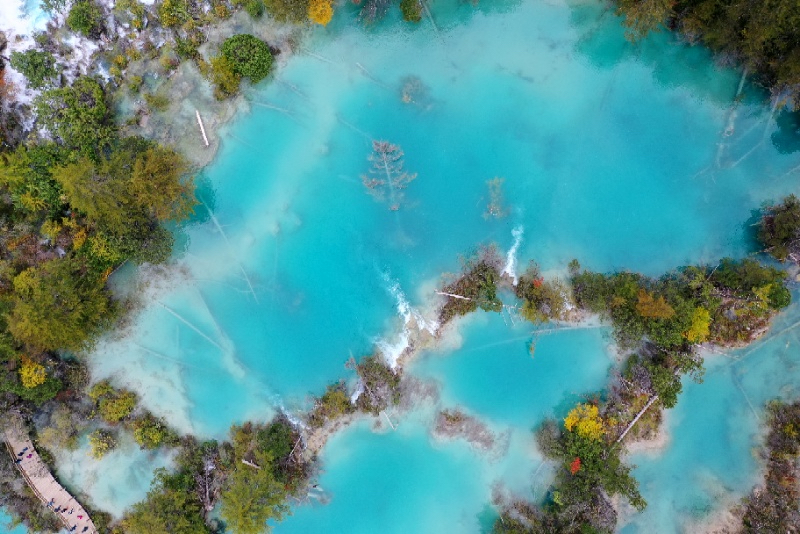Workshop on Space Technologies for Post-Disaster Restoration of World Heritage Sites Held at Jiuzhaigou
It is widely recognized that space technologies play a unique role in addressing disasters on world heritage sites. On October 13, 2020, a Training Workshop on Space Technologies for Post-Disaster Restoration of World Heritage Sites was held at the Jiuzhaigou Valley, a world heritage site in southwest China's Sichuan Province to mark the International Day on Disaster Risk Reduction.
Around 50 trainees from 10 Chinese World Heritage sites will receive a week-long training on remote sensing fundamentals, unmanned aerial vehicle operations, space disaster reduction and more.
The event was organized by the International Centre on Space Technologies for Natural and Cultural Heritage (HIST), the first UNESCO Category-2 Centre focusing on space technologies for the conservation, management and sustainable development of UNESCO-designated sites, and was co-organized by the Aerospace Information Research Institute (AIR) under the Chinese Academy of Sciences (CAS) and Jiuzhaigou Administration of World Heritage Site.
In line with Convention concerning the Protection of the World Cultural and Natural Heritage, Sendai Framework for Disaster Risk Reduction 2015-2030, 2030 Agenda for Sustainable Development, and other international documents, HIST conducted a three-year project for space-air-ground integrated monitoring of the Jiuzhaigou World Heritage Site.
On August 8, 2017, a magnitude 7.0 earthquake struck Jiuzhaigou, severely damaging some parts of world heritage site. A post-disaster restoration master plan is currently being implemented to protect Jiuzhaigou’s outstanding universal value and integrity.
HIST researchers have employed remote sensing and other technologies and conducted field investigations to evaluate bodies of water and vegetation, topography, and environmental factors in Jiuzhaigou in 2020.
Research results show that Jiuzhaigou’s ecological environment is gradually recovering. HIST’s research teams will go on to monitor disaster restoration levels in vegetation and water environment as well as risks from landslides.
HIST will continue to use the latest space technologies to help more UNESCO-designated sites across the globe, especially those in countries and regions along the Belt and Road to strengthen disaster risk prevention and improve relevant risk management.
On this special day, HIST calls for international research institutions and organization in this field to make joint efforts to accelerate the achievement of UN SDGs relating to UNESCO-designated sites.

A UAV image of the Jiuzhaigou.



News & Events